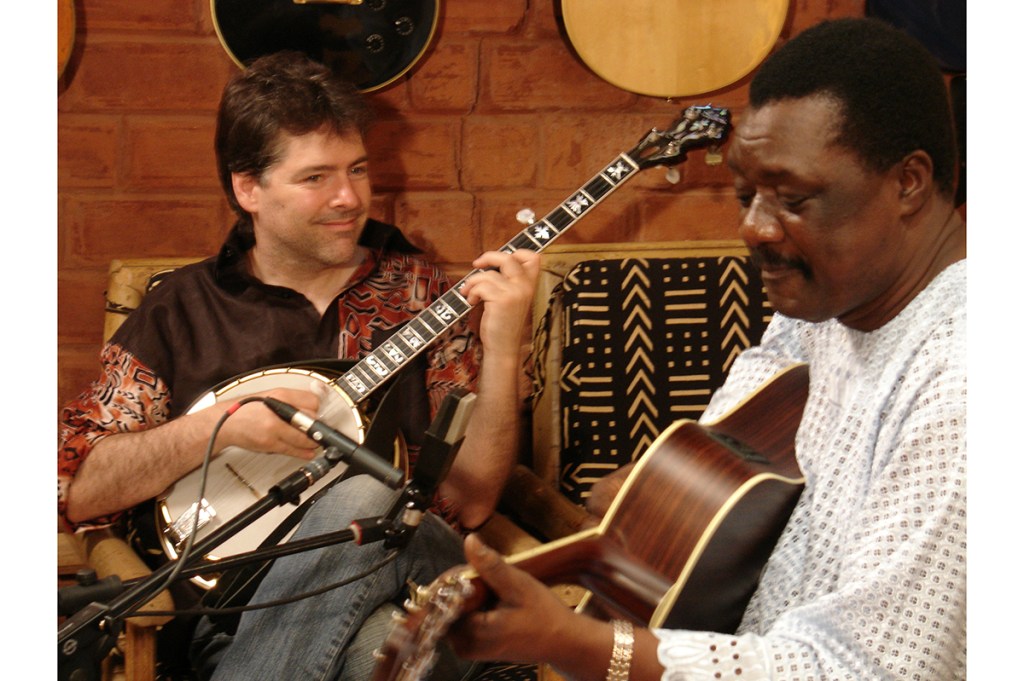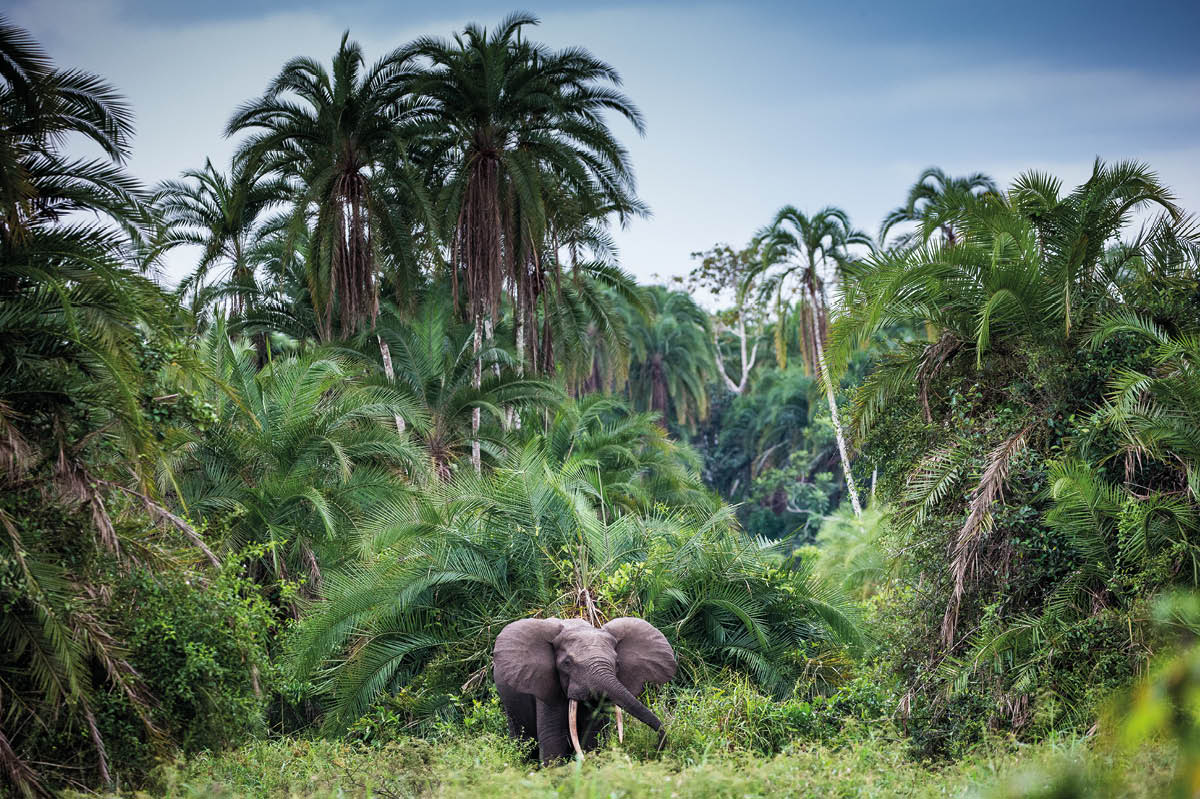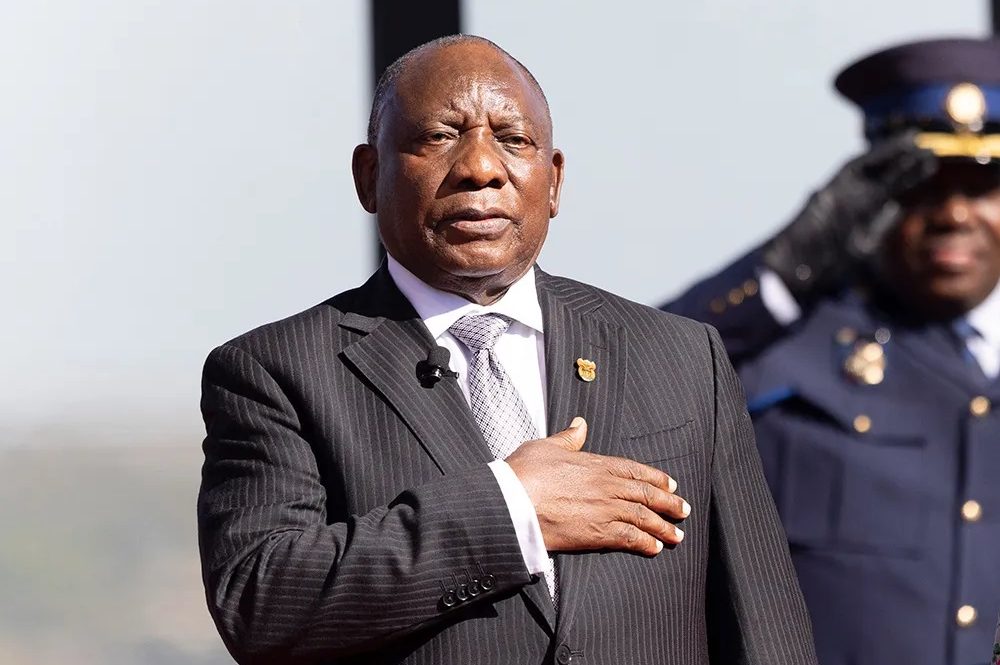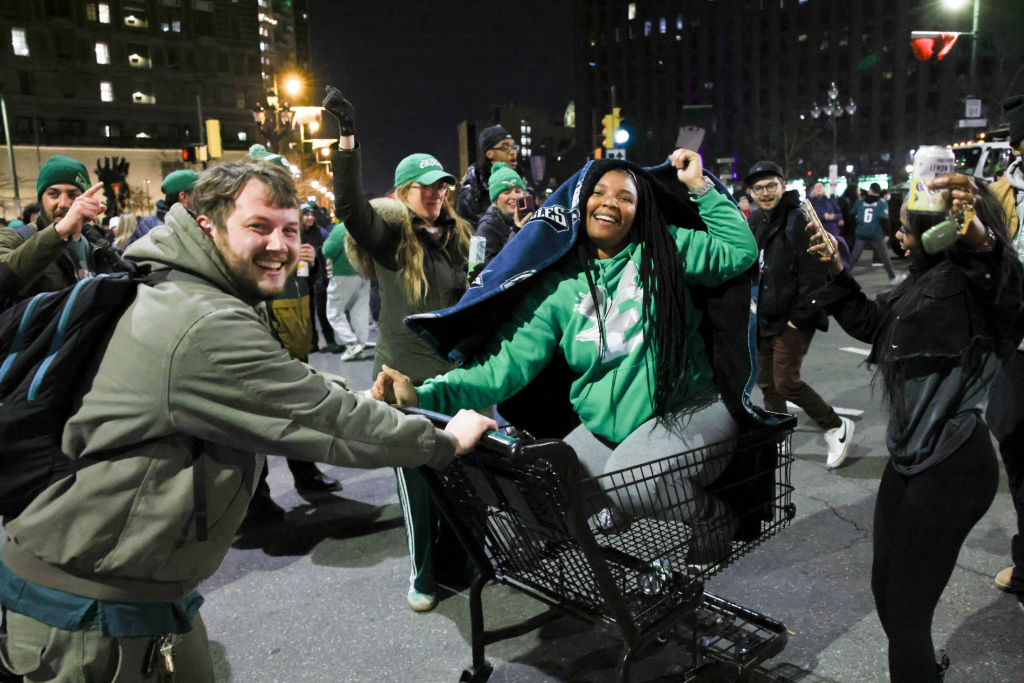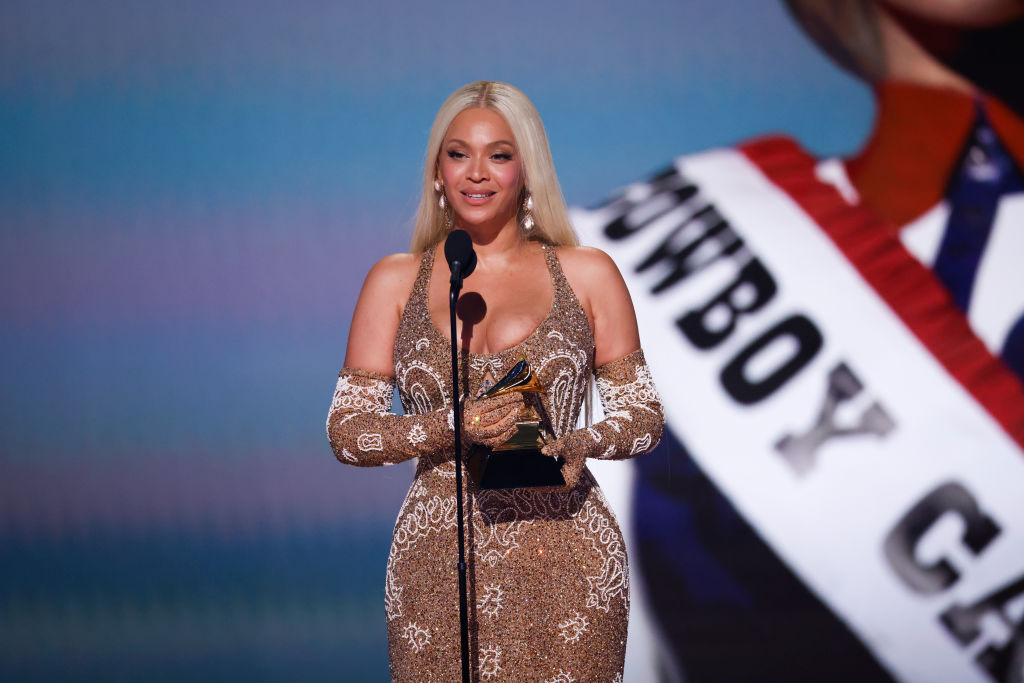The banjo was present at the creation of jazz but, like the clarinet and the fiddle, it fell from favor, and for similar reasons. The saxophone and the electric guitar were easier to play, more expressive and much, much louder. The banjo was on the way out even as it was on the way in — in the Hot Five recordings of December 1927 that instituted the jazz solo as we know it, Johnny St Cyr played both banjo and guitar — but the banjo had somewhere else to go. The fleet-fingered took their four-and fivestringers to the hills — the Appalachians, for instance. There, the banjo thrived with those other refugees from early jazz, the fiddle and the steel-strung guitar.
Metropolitan contempt caught up with it in the Seventies. In Deliverance (1972), a banjo-playing hillbilly boy is the image of rural inbreeding and a symbol of the urban environmentalist’s good conscience. ‘Dueling Banjos’, the banjo’s last and finest moment in the charts, is the sound of the primitive but natural society that will be washed away by the construction of a dam in the wilderness of northern Georgia.
By 1979, the banjo was ironic. Kermit the Frog’s journey to Broadway begins as far away as possible, in a swamp, plucking the plaintive opening chords of ‘Rainbow Connection’. In the same year, the Charlie Daniels Band had a global hit with the bluegrass-disco crossover ‘The Devil Went Down to Georgia’. Daniels, a reformed banjo player, stuck to the fiddle. In 2001, the banjo was notably absent from Willie Nelson’s cover of ‘Rainbow Connection’.
Yet the banjo remains the sound of bluegrass authenticity. You can trace Taylor Swift’s advance into the mainstream and her retreat from complex song structures and live recording through the slow fade-out of the banjo which, after bubbling away merrily on her first two albums, was deleted from ‘Sparks Fly’ on her third album, Speak Now. The banjo is silenced entirely on her subsequent recordings.
Swift’s gradual repudiation of the banjo tracked her transit across the political spectrum and into the banjoless realm of the NeverTrumpers. The banjo, once near-universal in American popular music, has become the aural signature of its whitest styles. This is ironic, for no other tuned instrument in the American repertoire is so close to African precursors. No instruments were carried on the Middle Passage: with the exceptions of the banjo and Latin percussion, American popular music has almost entirely been created on instruments from Europe or their electrified adaptations. Like the syncopation that defines African American music, the banjo is a New World reconstruction. Stand a banjo up in front of you, add some more strings and pluck them with both thumbs, and you have the kora, the West African harp.
In 2009, the American banjo player Béla Fleck recognized this consanguinity with an album called Tales From the Acoustic Planet, Vol. 3: The Africa Sessions. Fleck, who was born in New York City in 1958, has done for the banjo what Jimmy Smith did for the Hammond organ, Coleman Hawkins for the tenor saxophone or Eric Dolphy for the bass clarinet: he has reimagined the range and expression of his instrument. Fleck and his group, the Flecktones, have reconnected the banjo to the historic variety of American music, and mashed these together with electronic experimentation and the stylistic catch-all of ‘world music’. The first Acoustic Planet album, from 1988, combined bluegrass and jazz players like Dobro guitarist Jerry Douglas and saxophonist Branford Marsalis. The second, from 1999, returned to bluegrass. For the third, now reissued with a documentary film and two additional albums, Fleck recorded with musicians in three sub-Saharan musical zones: Tanzania in the east, Uganda in the center and Mali in the west.
Anyone who likes American music should buy this set, and not just for Fleck’s lucid and lyrical playing. This is guitar and drum music as it should be played. It’s traditional to refer to the blues as the river from which all American music flows, but when you hear virtuosi like the Malian guitarist Djelimady Tounkara, you realize that the African survivals in American music are narrow rivulets and, in the case of rock music, mere puddles.
Everyone knows that the blues comes from west Africa. Except, that is, when it doesn’t. The mass production of sheet music fixed the American blues as a 12-bar. Like country, the blues uses a pentatonic scale with passing notes. Unlike country, the blues emphasizes flat thirds and sevenths, the ‘blue notes’. But there are no 12-bars in African music: the chord sequences are longer and more elaborate. The call-and-response of blues is here, but the lines are longer and harmonically richer. So are the rhythm patterns and their layering.
The introductory chords of ‘Buribalal’, recorded with the Malian singer-guitarist Afel Bocoum, are like those of Sam Cooke’s ‘Wonderful World’, but their rhythmic pattern is more complex. While the classic blues has a two-bar ‘call’ and a two-bar ‘response’, each call and response on ‘Buribal’ is four bars, creating a kind of 24-bar blues, only without the usual blues changes. After a variant eight-bar ‘chorus’ and a burning solo by Fleck, there’s a breakdown and a shift into triplet-time, with simultaneous guitar and banjo solos and soaring vocals from Bocoum. The final eight-bar statement rides on top of this rhythm, and is as pungently brief as a Lester Young restatement. There is no return to the ‘Wonderful World’ intro: there is so much music to spare.
Legend has it that when James Brown, America’s foremost practitioner of the breakdown-to-triplet move, came to Zaire in 1974 for the festival that promoted the ‘Rumble in the Jungle’ between Muhammad Ali and George Foreman, the local guitar genius Franco, whose band was also on the bill, wasn’t impressed by Brown’s group. The rhythms and melodies were too simple, the groove too forced. You hear what Franco meant on a track like ‘Buribalal’: enormous power and variety, with a lightness of touch lacking in American blues.
The melodies and solos in Malian music — and the Malians are the best guitarists on the planet, especially when they’re playing the kora — are invariably not pentatonic like those of blues: they’re diatonic, like those of jazz, or bluegrass in its more ambitious moods. We hear the difference on ‘Mariam’. Fleck and Djelimady Tounkara’s theme alternates between ornamented octaves in unison and individual improvisation. Tounkara, playing a Spanish acoustic guitar in standard European tuning, pours out trilling, tumbling descants of pure diatonic melody; Fleck answers harmoniously, but steers into jazz chromaticism. Suddenly they slip in unison across the Atlantic into a jazzy Latin sequence, and then, just as easily, they’re back in the open Malian tonality. That it sounds as easy as stepping from one room to another suggests how accomplished Fleck and his collaborators are: they’re developing a musical Esperanto as they play. It also shows how close the blues are to African music, even when you can’t hear them. And every now and then, you do hear them, but differently.
The ‘bluesiest’ track here is ‘Pakugyenda Balebauo’, recorded with Warema Masiaga Cha Cha of Tanzania: a pentatonic stomper whose riff evokes Hendrix’s ‘Voodoo Child (Slight Return)’. At 1:40, Fleck drops into half-time and reveals the song’s signature lick as the Malian ghost of John Lee Hooker. He and Tounkara repeat this lesson on ‘Soumaro’, switching back and forth from Tounkara’s absurdly light-fingered diatonic flamenco runs to Fleck’s bluesy banjo.
When the Malians do use the blunt instrument of the pentatonic, it’s for repetitive two- or three-note licks, slotted between the rhythm section and the soloist. Is this the origin of the American riff? The same device recurs in Count Basie’s horn section, James Brown’s rhythm-guitar patterning and in the interplay between lead and rhythm that Keith Richards and Ron Wood call ‘the ancient art of weaving’.
There are other weavings here. In the electrified pan-African collaboration ‘D’Gary Jam’, Fleck’s looping banjo is the thread that guides the ear into labyrinthine cross-rhythms and instrumental textures of a complexity exceeding those of Miles Davis’s Bitches Brew. On the Tanzanian vocal chant ‘Zawose’, Fleck anchors the extended vocal line with root-and-fifth chording to an effect resembling Steve Reich’s early tape loops or the Penguin Café Orchestra. The Malian bluegrass benediction ‘Salam Aleikum’ sounds like ‘Man of Constant Sorrow’ in the desert.
There are enormous treasures here too: the joyous three-chord trick of the Nakisenyi Women’s Group of Uganda, the oceanic ripples of the Tanzanian thumb pianist Anania Ngoliga, the Ugandan xylophone jam ‘Wairenziante’, where the vocal surges up from dense rhythmic turbulence to hit the fifth just as a blues singer would. There’s also The Ripple Effect, a previously unreleased live album of Fleck duetting with the Malian kora star Toumani Diabaté. This alone ranks among the loveliest music ever recorded. And I never thought I’d say that about a banjo album.
Throw Down Your Heart: The Complete Africa Sessions and the previously unreleased Ripple Effect are released on Craft Records.



